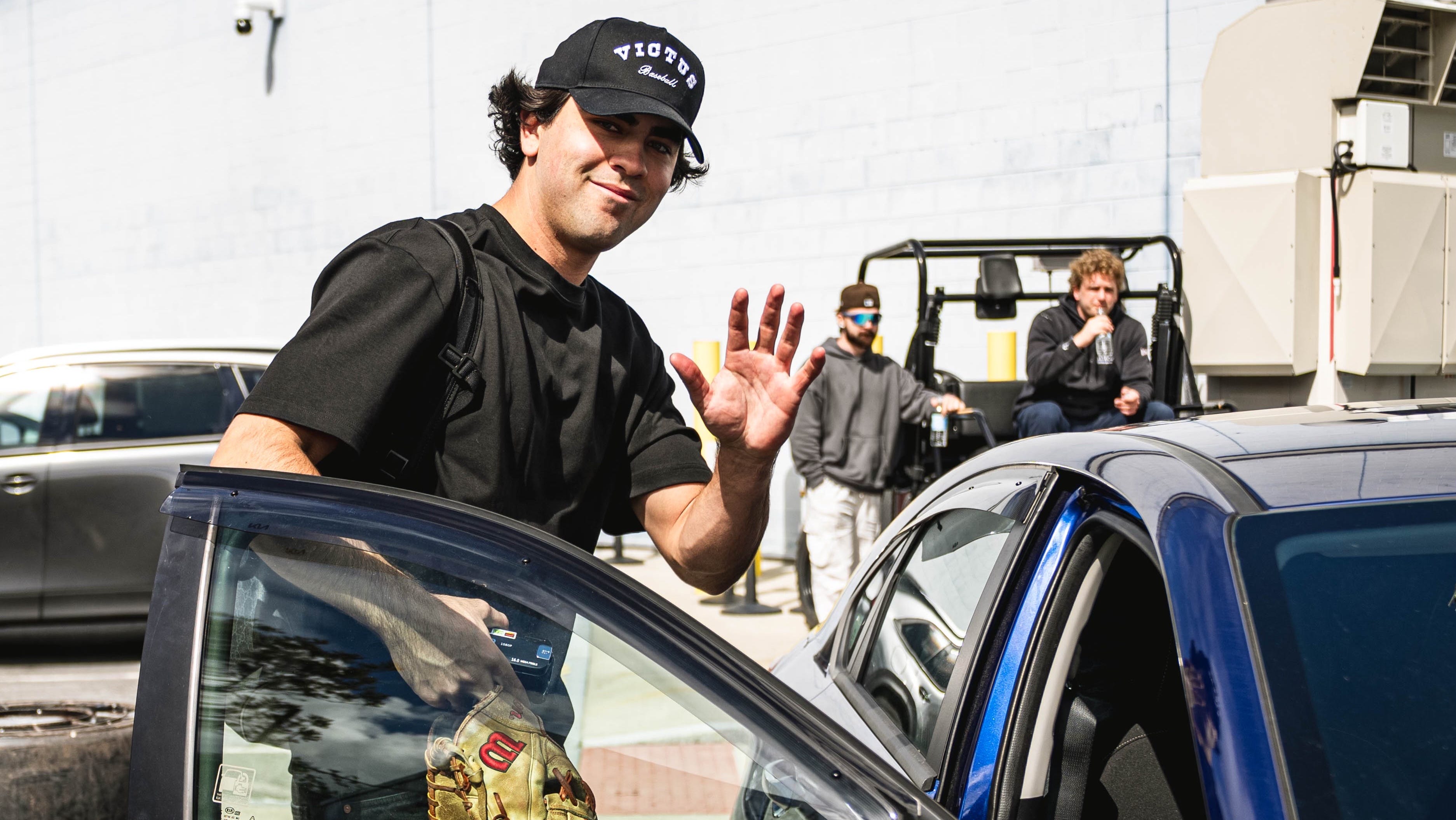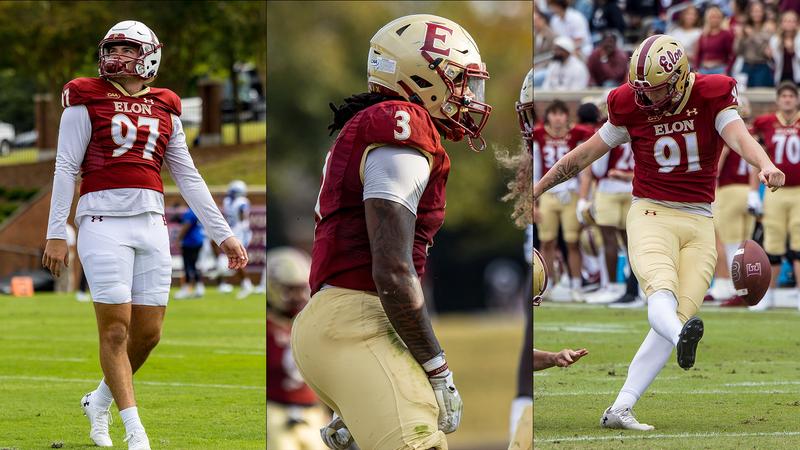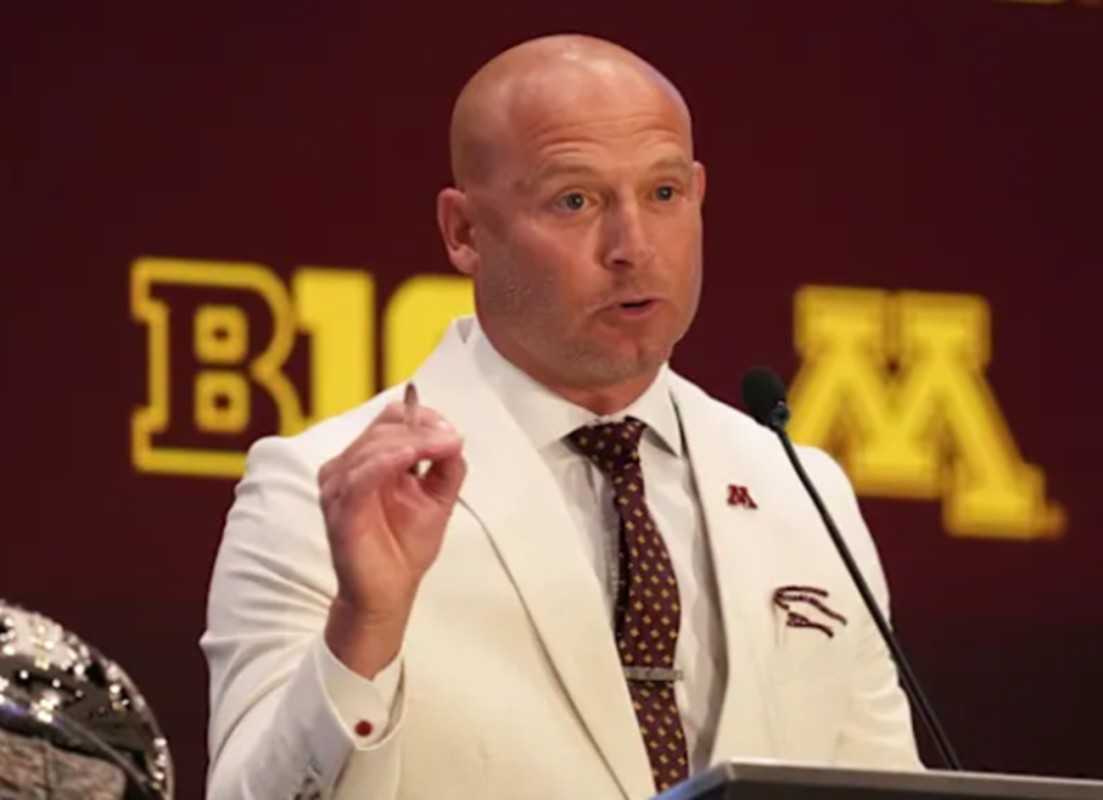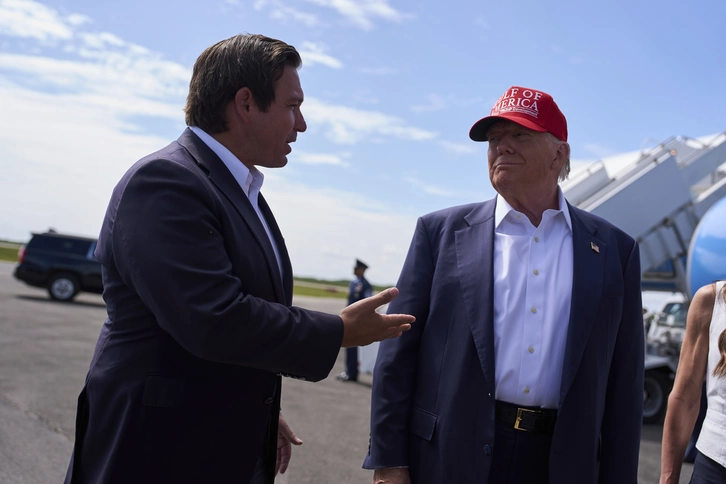NIL
Boston Red Sox should just call up the prospects and let them play


Marcelo Mayer video heading to Boston
The Boston Red Sox called up prospect Marcelo Mayer on May 24, 2025.
Ryan DeSantis
- The Red Sox are struggling with a .500 record despite Garrett Crochet’s strong pitching performance.
- The team’s underperformance is attributed to a combination of injuries, lack of production from veterans, and questionable managerial decisions by Alex Cora.
- The article also touches upon other sports news, including NIL deals, college basketball scheduling, and the NBA playoffs.
Thinking out loud…while wondering if baseball managers and diapers should both be changed regularly for the same reason…
X post of the Week, from @Jared_Carrabis: “The fact that the Red Sox are .500 (6-6) in Garrett Crochet starts when he’s rocking a 2.04 ERA takes the whole .500 Sox thing to a new level.”
Oh, and here’s another gem… Crochet has allowed six hits in the 12 lead-off at bats he’s faced in his Red Sox starts. Two of those were first-pitch-of-the-game home runs. So, it’s not just a lack of support. It’s a lack of baseball common sense.
What are we doing here? Short of letting Alex Cora go… which is unlikely thanks to his offseason contract extension…it’s time to perform a full makeover on the Boston Red Sox and figure out how to fix this mess of a season.
Cue the annual cry of “they’re ruinin’ my summah!’ And summah hasn’t even started yet.
Marcelo Mayer is predictably struggling early in the wake of Alex Bregman’s unfortunate boo-boo. Kristian Campbell’s talents are fading faster than your new pair of jeans. But the younger guys get the benefit of any doubt…because they’re young and not jaded by selfishness or mysterious injuries. At least not yet. Let’s call up the kids and let them play.
We’re past the stage of waiting on veterans to produce. By this time, they either can’t or won’t. Tristan Casas, Trevor Story, Connor Wong, David Hamilton, Rafael Devers’ aversion to picking up a glove, the entire pitching staff… sure, injuries are a factor in the lack of production, but even when healthy none of these guys carried his own load, much less that of others missing in the lineup.
And none other than Hall of Famer Jim Rice, who sits in NESN’s TV studio watching over Red Sox nation like a man who knows – he likely does – and has suggested the team stop being something they aren’t. They’ve lost their power. Play small(er) ball. Maybe a guy with his credentials should have a bit more attention paid to his observations.
Back to Devers for a moment. Please. He’s driven in some runs. But he’s coasting, because the manager ‘has his back.’ He won’t play where he’s needed, for the good of the team. And you will support that thought every time you go to Fenway.
Not for nuthin,’ but Cora is coasting, too. He’s got a head-scratcher of a decision going for him nearly every game. Pulling pitchers early. Leaving them in too long. Refusing to consider positional moves that could benefit the team. There are a hundred games left to play, but there might as well be a million.
He’s checked out. He’s trying to squeeze a square peg into the round hole in front of him.
Why is this team waiting on calling up Roman Anthony? There’s nowhere to put a guy with a near-four-digit OPS into your lineup? The best possible lineup has yet to be put in play this season by Cora and/or Craig Breslow, for one reason or another.
Here’s the SOS. Save Our Season. Call up all the kids. Let ‘em learn on the job. Let’s get a glimpse of what might still be someday, to see if they can play the game… and figure out if there is any shred of recognizable baseball intelligence still within the front office that doesn’t rely on a slide rule.
If you’re not firing the manager, and you can’t fire all the players (even if they’re deserving), that’s what’s left of our summah.
Remember this as you’re singing “Sweet Caroline” after the All-Star break at Fenway, having just paid $100 to park, $200+ for tickets and these darned Sox are already out of postseason contention.
∎And keep laughing, Yankee fan. You haven’t won anything yet. But you do have a lead over Boston. Looks like you’ll keep it, too.
∎My buddy “Big E” sez the amount of self-control it takes to NOT say what’s on his mind is so immense…he needs a nap afterward.
∎ICYMI: Big 12 schools received a record $500 million in revenue for the 2023-24 school year. But ACC schools also received all-time shares from their media contracts, placing third behind the Big Ten and SEC. As US District Judge Claudia Wilken continues to consider the NCAA House settlement, attorneys representing the NCAA have revised plans for walking back the number of roster spots per sport that could be lost in the deal. Any new plan would be optional for schools to follow. As an athlete’s eligibility expires, in some sports, those roster spots would be rolled back.
So far, the Big Ten, SEC, Big 12 and ACC have all agreed to support this “grandfathered” approach to roster limits.How big is NIL these days? The latest example is 6-9 Yaxel Lendeborg – a potential first-round NBA Draft pick – deciding to return to college to play at Michigan. He played at Alabama-Birmingham a year ago. And even the last pick of the first round is projected to sign for $14.1 million.
∎Likely not in the same financial category, but you never know… Fall River’s Joson Sanon announced he’s withdrawing from the NBA Draft and will head to St. John’s for next season.
∎Scheduling tidbits: A great idea – UConn’s men and women will face Boston College’s men and women in an Oct. 13 exhibition double-header at Mohegan Sun; the Friars will open Nov. 3 against Holy Cross, and play a second game at Mohegan Sun, against Virginia Tech… with a Hall of Fame Game already scheduled for the casino against Penn State. Kentucky will host Georgetown in an exhibition game on Oct. 30.
∎Villanova and new coach Kevin Willard will open the college season Nov. 3 against super-freshman A.J. Dybantsa and BYU… while UConn will reportedly face BYU in November at TD Garden in Boston. Creighton and St. John’s are likely headed for Vegas and the Players’ Era NIL tourney.
∎Providence head coach Kim English held a Zoom Q&A chat with PC season ticket holders and media this week – of note, Corey Floyd was considering a transfer. English told him, “no you’re not.” Sez a lot, doesn’t it? And the Friars won’t be home to open the next three years with ComiCon being held at the AMP and Convention Center.
∎Speaking of Friar hoop, Shaun Brown is the new strength and conditioning/High Performance coach for the men’s basketball team, replacing Chase Campbell who resigned last month. Brown was head strength coach at PC from 1989-92 while Rick Barnes was head coach and was also later the strength coach for the Celtics, and most recently at West Virginia.
∎First-year Bryant coach Jamion Christian has three new portal additions that will likely be leaned on, heavily, as the Bulldogs attempt to defend their America East title. Fifth year forward James Cooper, who stands 6-8, transfers from Oregon, 6-8 small forward Quincy Allen comes from Chicago State and 6-2 point guard Jayhlon Young moves to Smithfield from College Park, MD.
∎Not sure why Al Horford wants to keep playing at this stage of his life. We’ve heard what he’s said but now is as good a time to retire as any, unless he simply needs the money. Is that even possible? I will say this – for a team that will face certain challenges next season, Horford can often be a steadying presence. But is that good enough?
∎Show of hands here – who is surprised at the Knicks getting Knocked around by the Pacers in the NBA Eastern Conference finals?
∎Speaking of knocks… the Buffalo Bills get the feature slot on HBO’s “Hard Knocks” once NFL training camp rolls around. And the in-season version of the show will focus on the NFC East division, as 2025 will be the first season of a new, multi-year deal between NFL Films and HBO.
∎What’s the big deal over Patriots’ WR Stefon Diggs’ party video on a boat with some pink powder? He missed a voluntary Organized Team Activity? You knew what you were signing up for when you brought him in, didn’t you? Didn’t you?
∎Has Jordon Hudson had her 15 minutes of fame, yet? Apparently not – a quick search for North Carolina football brings up the latest in rumor and innuendo surrounding coach Bill Belichick’s girlfriend. I’ll say this – I have interest in Tar Heel football this fall for the first time. Like ever.
∎We should be so proud. Bookies.com just released a survey of the NFL’s most foul-mouthed fans… based on the profanity they’ve used on social media. It’s the only thing the J-E-T-S have been good at in more than 50 years, but Patriot fans rank fourth out of 32 teams, behind the NYJ, Eagles and Bills.
∎URI baseball is downright offensive. But that’s a good thing. The Rams’ offense was primarily responsible for Rhody winning the Atlantic-10 regular season and tournament championships, placing them in Baton Rouge, Louisiana this weekend for the NCAA regionals.
The Rams’ 3-seed in the four-team regional is their highest seed achieved in their third NCAA appearance. The offense averages better than nine runs per game and ranks in the national Top 15 in multiple categories – walks, hits, on-base percentage, runs scored, runs per game and triples.
It has been a solid spring for baseball in Rhode Island. Bryant won the America East regular-season title but lost in extra innings to Binghamton in the conference tournament championship game and missed out on the NCAAs. At the Division III level, Salve Regina and Johnson & Wales both reached the NCAA Tournament, with the Seahawks coming one win away from qualifying for a second straight World Series.
Sorry, Boston. I know Northeastern also made the NCAAs, but at least we can play baseball at a consistently high level around here. Just sayin’.
Interested in having your questions on Rhode Island sports (and yes, that includes the Patriots, Red Sox, Bruins, and Celtics) answered in a somewhat timely fashion? Think out loud and send your questions, comments, and local stories to jrbroadcaster@gmail.com. We’ll share mailbag comments right here! Join me on Twitter/X, @JRbroadcaster…and on Instagram and Threads @JRbroadcaster.
NIL
College football program set to lose 15 players to NCAA transfer portal

It was a fairly successful first season for Wake Forest under new head coach Jake Dickert.
The Demon Deacons finished the regular season 8-4 overall (4-4 ACC), qualifying for a bowl game for the first time since 2022.
After a shaky 2-2 start, the Demon Deacons won six of their last eight games, marking a major in-season turnaround. They notched quality wins over No. 14 Virginia and SMU, but fell to Duke in their final game of the season.
It was a remarkable turnaround for Dickert, who took over the program after back-to-back 4-8 seasons under Dave Clawson. Dickert accepted the position after four seasons at Washington State, where he compiled a 23-20 overall record.
The Demon Deacons have one final game left against Mississippi State in the Duke’s Mayo Bowl, but that hasn’t deterred multiple players from announcing their intentions to enter the transfer portal.
According to 247Sports, the Demon Deacons have had 15 players enter the transfer portal as of Dec. 18. Most recently, freshman quarterback Elijiah Oehlke announced he will be entering the portal when it opens on Jan. 2, joining a host of other former Demon Deacons.

One of the most notable losses for the Demon Deacons was freshman wide receiver Chris Barnes, who announced his transfer decision on Dec. 14. Barnes led Wake Forest with 39 receptions for 547 receiving yards and three touchdowns. He was named an All-ACC honorable mention as a wide receiver, while earning third-team honors as a return specialist.
Only two days later, sophomore wide receiver Micah Mays also announced his intentions to enter the transfer portal. He finished the year with 18 catches for 302 receiving yards and two scores, averaging 16.8 yards per reception. Both Barnes and Mays were promising young offensive stars, making both major losses for the program.
Another key loss was defensive tackle Mateen Ibirogba, who transferred from Georgetown to Wake Forest before the 2023 season. He stepped into a bigger role this season, totaling 21 tackles, 3.5 tackles for loss, and two sacks for the Demon Deacons.
Along with the names above, tight end Harry Lodge, safety Jacob Cosby-Mosley, defensive lineman Ka’Shawn Thomas, wide receiver EJ Reid, offensive lineman Derrell Johnson II, and offensive tackle Nathan Pahanich are some other players who have announced their decision to enter the transfer portal.
It’s important to note that the NCAA transfer portal does not open until Jan. 2, 2026. All players can do right now is announce their plans to enter the portal; once it opens, they can officially enter their names and contact their preferred schools. The transfer period will close on Jan. 16 after 15 days.
Wake Forest will face Mississippi State in the Duke’s Mayo Bowl on Jan. 2, 2026, in Charlotte, North Carolina. Kickoff is scheduled for 7 p.m. CT on ESPN.
NIL
Mitch Barnhart addresses retirement rumors, Kentucky’s deal with JMI in new interview

Is Mitch Barnhart’s tenure as the University of Kentucky’s athletic director coming to an end next year? Barnhart addressed the retirement rumors in a new interview with the Herald-Leader, telling Jon Hale that he’s still “invigorated” by his work, but when the moment comes that he’s not, he’ll sit down with his family and discuss the future and what’s best for them and the university.
The questions are timely. In 2023, Barnhart signed a contract extension through the 2027-28 school year that would allow him to transition to a special assistant to the president role starting July 1, 2026. To do that, he must give six months’ notice, making the earliest deadline December 31, 2025, two weeks from today.
“Two things. I love competing. You know that. You know I love this place with all my heart. We came here in 2002 and planned on saying six to eight years and stayed a lot longer. I know there’s people that get frustrated because I’ve been here a long time, and that’s OK. I sense that. An old boss of mine told me one time, every time you make a 50-50 decision, you lose 50% of your friends. He’s probably not wrong, but we love Kentucky. I get up invigorated about what we’re doing at work. I love watching our kids compete. When that day comes — and don’t know — I’ll sit down with my family, and we’ll talk and determine what’s best for our family and for me, but most importantly, what’s best for Kentucky.
“I’ve got a couple, two-and-a-half years left on my contract. The ambassador clause is out there. It can go anytime after December 31, and if that’s something that’s best for this university, then we’ll have that conversation. If it’s something that we want to continue to work at it, I would like to win some more things. I like winning. The volleyball run has been a blast. I’d like to win at some more things and see what we got. And I love our coaches. We’ve got good people and fun to work with.”
The interview comes one week after Kentucky Sports Radio’s Jacob Polacheck and Jack Pilgrim published an article on Kentucky Basketball’s struggles on the recruiting trail, which cited anonymous sources that said UK’s partnership with JMI for NIL management has played a part, specifically the highly structured brand partnership with UK’s official partners. Sources told KSR that JMI was requiring recruits to sign away NIL rights that would normally be untouched at any other school.
Before Kentucky’s game vs. Indiana, Barnhart addressed the JMI concerns in an interview with Tom Leach, defending the partnership and insisting that UK student-athletes are free to sign third-party deals while acknowledging that the university encourages them to work with its official partners. He does the same in this interview with Jon Hale, although the issue of what prospective student-athletes (recruits) are asked to agree to as part of their deals to come to Kentucky is still unclear.
HL: When an athlete accepts revenue sharing money from UK, do they automatically get tied into the JMI deal, or do they opt into that separately?
Barnhart: “There’s some things that they’re opting into. OK, there’s some things they opt into, and obviously that’s a part of that process. And then there’s some things that we say, ‘Hey, does this fit you? Does this fit you? Do you want us to go out and find you (a deal)? Is there some things that make sense in a marketing piece, a partnership piece, so to speak, or a sponsorship piece?’ And if it doesn’t, you’ve got your own thing; you’re not prohibited from doing your own thing. We’ve shown that on many cases with student-athletes in our program. We’ve got student-athletes in our program that have got deals that are outside our partners, that they’ve gone and had an opportunity to go access and do those themselves. They just can’t use our IP marks in that process. Part of the ability to use the Kentucky marks, which we think is super valuable, is that relationship with JMI. So yes, that is part of that process. But to go do your own thing, you can certainly do that.”
When asked, Barnhart said he was not aware of any UK athletes being denied a deal because it was with a competitor. He talks a lot more about the JMI deal, collectives, transparency about revenue-sharing figures, and the roles of general managers in the NIL era in the interview. Check it out at the Herald-Leader. Matt Jones has reached out to Barnhart for an interview on KSR and has not received a response.
[Q&A: Kentucky AD Mitch Barnhart responds to criticism of JMI deal, NIL setup]
NIL
College football players are earning millions – wealth managers are helping them keep it

Name, image and likeness (NIL) rights were created to finally allow college athletes to profit from their talent. That’s led to formerly unpaid amateur players becoming instant millionaires, using their newfound wealth to save and invest, help out family, or even share the money with their teammates.
But handing that much money to teenagers is also risky. Grown professional athletes have blown through millions of dollars in the past, and while the stories of “going broke” are more infrequent today, there’s still a risk.
In steps NIL financial advisors, whose sole focus is making money earned from college stretch further than the one to five years an athlete is in school. They advise clients on the benefits of saving, investing, budgeting, taxes, and saying “no.”
In the past 10 years, there has been a massive shift in player compensation. Former and current players across different sports have successfully challenged and sued for greater equity in college sports revenue, including increases in stipends (2015), the right to profit from their NIL (2021), and the right to receive direct compensation from their university (2025).
According to Opendorse, a company that facilitates NIL endorsements for athletes, it’s estimated that college football players alone earned $1 billion from NIL payments in 2024. The company estimates that total will nearly double ($1.9 billion) by the end of 2025 after the introduction of revenue sharing on July 1.
Didier Occident is a wealth management advisor at Milwaukee-based financial services firm Northwestern Mutual. He also runs a financial literacy program, Secure the Bag. It is for college and professional athletes.
Secure the Bag is a 60-minute presentation in which Occident discusses budgeting, personal credit, taxes, and other money matters. It puts the audience through an interactive budgeting game that requires them to make financial decisions based on real-world examples from the four years of NIL’s existence.
For example, there’s an athlete Occident represented who made an expensive, beyond-his-means purchase that got him down to almost no money — $75 to be exact. To get the player’s money back, he posted the item on Instagram for sale.
“There’s always that ‘Keeping up with the Joneses’ feeling, but now these guys gotta keep up with IG,” he said.
Occident began working with college athletes around 2018 when conferences began increasing some player stipends by about $2,000. He stressed to athletes at the time to view the stipend as a salary so that they know how to manage any kind of money.
“If you can’t manage $1,000,” Occident would tell the players, “you can’t manage $1 million.”
He’s presented at TCU, Florida State, Michigan, Oregon, Alabama, Tennessee, Oregon State and a few other football programs. He’s also presented with eight NFL teams, including the Los Angeles Chargers and San Francisco 49ers.
When Occident first talks with teams or meets with prospective clients, he asks them, “What do you want to achieve with your money?” The more specific the goal — to travel the world or one day open a food truck — the more faith Occident has in his ability to show them the steps to reaching it.
“Because they have something that is in their mind that is going to keep them walking that straight line,” Occident said.
There’s a widely held assumption that rich people will eventually lose all their money. Whenever the lottery gets to a certain amount, it’s been said that 70% of lottery winners eventually declare bankruptcy, even though that likely isn’t true. Much of the interest in the various gambling scandals plaguing the sports world stems from interest in rich athletes risking millions on sports betting.
But these are adults we’re talking about. What happens when a bunch of teenagers are handed millions of dollars? It’s easy to assume they’ll blow their riches just as quickly.

Financial Literacy For Student Athletes
Where college athletes spend their money isn’t all that shocking.
“Unfortunately, stereoptical things: the cars, clothes, the jewelry,” said Pat Brown, a wealth manager at Lawrence, Kansas-based financial services firm Creative Planning and the founder of “Financial Literacy for Student Athletes,” which specializes in money management programming for college athletes.
Brown was an all-conference linebacker at Kansas from 1994 to 1999, back when players received $600 monthly stipends compared to the estimated $5 million Texas quarterback Arch Manning is bringing in today.
“That was big money right there. Shoot,” Brown recalled.
During his final season, Brown took a class that introduced college athletes to basic financial literacy tools, such as investing and life insurance. Though Brown grew up middle class in the Ohio suburbs, he didn’t know anything about money management.
“Being Black, we just don’t talk about that stuff,” said Brown, author of the book, Financial Literacy for the Culture: Teaching What Wasn’t Taught-Credit, Budgeting, Investing, and Legacy for the Culture.
It is why Brown sees it as his purpose to teach today’s athletes how to earn, maintain and increase their wealth. He launched “Financial Literacy for Student Athletes” around 2021 and has presented at Kansas, West Virginia and Ohio.
Brown goes over opening bank accounts, the importance of credit scores/reports, and the various types of investment devices (traditional, Roth IRA, stocks, etc.). Through Creative Planning, which counts more than 500 college and professional athletes as individual clients, Brown helps his clients set up taxable and retirement accounts, establish limited liability companies, and review NIL contracts.
“I wasn’t exposed to this stuff until my senior year [at Kansas],” Brown said.
While working toward wealth for all college football players is the goal, it’s especially important for Black players, who make up nearly 45% of the sport.
Black people live within a system that legally held them back until about 60 years ago, creating a wealth gap that persists to this day: Median white net worth in America is almost six times that of Black net worth.
According to popular media such as ESPN’s “Broke” documentary, Black athletes are almost expected to blow all their money: Former NFL receiver Odell Beckham Jr. recently asked, “Can you make that last?” in reference to signing a $100 million contract.
But, young rich Black athletes aren’t any more irresponsible with their money than anyone else: Americans owe $1.23 trillion in credit card debt.
There is no group, Occident said, that has more opportunity to narrow that wealth gap than Black athletes.
“It is my mission to help them do what they can to erase the systemic part of what we’ve dealt with for 400-plus years,” he said.
Occident and Brown believe athletes are uniquely suited to handle money. The discipline to stick to a financial plan is no different than the discipline needed to play at a high level in college. Starring at the NCAA Division I level is almost impossible without being accountable and consistent.
“You don’t get that without being consistent and doing what you need to do,” Occident said.
Baltimore Ravens defensive back Malaki Starks neither had much money growing up nor did he know how to save it.
“It was like get money, spend money,” he said.
But after Occident’s presentation to the Georgia football team while Starks was on the roster, it eased Starks’ mind about managing his $160,000 in NIL deals.
Starks said he now has at least four investment accounts he manages. After getting his first NIL check his sophomore year at Georgia, Starks said he saved some, gave some to his parents, and the rest …
“I kept enough to get gas for the next month and go out to eat, like, twice,” he said.
NIL
Three Phoenix Named All-Americans – Elon University Athletics


Football
Elon Athletics
Jeff Yurk Voted First Team All-American Twice
- First Team All-American (FCS Football Central)
- First Team All-American (Stats Perform FCS)
- Second Team All-American (Associated Press)
- Second Team All-American (American Football Coaches Association)
Yurk finished his fourth season with the Phoenix as Elon’s all-time leading punter. As a senior this fall, Yurk ranked second in the FCS and third in all of college football in punting average (48.3 yards). He tallied 17 punts inside the 20-yard line and 24 punts of greater than 50 or more yards. Yurk dominated his CAA competition during his senior season, averaging more than five yards per punt greater than any other punter in the league. He concludes his Phoenix career as Elon’s all-time leader in career punting average and has the top three seasons by punting average in program history.
- Second Team All-American (FCS Football Central)
- Second Team All-American (Stats Perform FCS)
- Second Team All-American (Associated Press)
Brown became the first Elon player ever with double-digit sacks in a season (12.0) during his standout sophomore campaign this fall. Brown broke Elon’s single-season FCS sacks record and tied the program’s FCS career sacks record (16.5) in just two years. He led the CAA in sacks by 2.5 and was the only CAA player with double-digit sacks. Brown ranked top-15 nationally in forced fumbles, sacks, and tackles for loss. The Jacksonville native was twice named CAA Defensive Player of the Week in 2025.
- Honorable Mention All-American (Associated Press)
Barnes was chosen as an Associated Press Honorable Mention All-American following his first full season as Elon’s starting kicker. The sophomore finished 15-for-18 on field goals and missed just one attempt inside 50 yards. He was a perfect 40-for-40 on PATs, the most in the CAA without a miss. His 85 points were the second most in the CAA among kickers and first on the team. On kickoff duty, he recorded 20 touchbacks on 49 kickoffs.
SUPPORT THE PHOENIX
STAY POSTED
-ElonPhoenix.com-
NIL
Big Ten Coach Exposes Fake NIL Offers Ahead of Bowl Game

The Minnesota Golden Gophers are 7-5 this season following a season-ending home win over the Wisconsin Badgers with one final matchup left on Friday, Dec. 26 (4:30 p.m.) at Chase Field in Phoenix against the New Mexico Lobos in the Rate Bowl.
The Golden Gophers are led by charismatic head coach P.J. Fleck, known for his motivational slogans (‘Row the Boat’) and history of getting maximum effort and performance out of his oftentimes overmatched teams.
Advertisement
Fleck coaches in a brave new world of college football including NIL (Name, Image and Likeness) payments for college football players that are often set up by universities, granting lucrative opportunities for student athletes to earn off of sponsorship deals.
On Wednesday, Fleck spoke at a press conference during which he detailed the head spinning world of NIL payments and negotiations while stating that some offers used as bargaining chips by players are not real in his personal estimation.
Fleck’s Stunning NIL Admission
Fleck’s story on NIL was shared by Tony Liebert of ‘Bring Me the News,’ a media company based in Minneapolis.
Advertisement
“I don’t think the general public actually truly knows what college football truly looks like,” Fleck said.
He painted the picture of a complex process of negotiating contracts that lacks the structure of the National Football League’s professional contracts.
“I think that everybody has representation now,” Fleck said, with the goal of “getting the most money they possibly can.”
He spoke about the complex roles college coaches play in the process.
“The roles we’re in is like, you’re the head coach, you’re the president, you’re the owner, you’re the GM, you’re the director of player personnel, and you’ve almost got to be a negotiator as well of what you have in your budget…And you’re doing that without the systems that the NFL has in place,” Fleck added.
Advertisement
Fake NIL Offers Cloud Negotiation Process, Fleck Says
A media member commented on the lack of a salary cap in the sport, musing that it must be difficult for Fleck and other coaches to know how much each player is being offered by other schools before writing, proposing, offering and negotiating contracts.
“Sometimes those offers are real, sometimes those offers aren’t real,” Fleck added.
“It is a very unique environment to work in,” Fleck added.
“I truly believe…You could put a camera on somebody’s shoulder…You (could) do a reality show of what’s going on right now,” the Golden Gophers coach added, gesturing that it’s a wild, unpredictable situation.
Advertisement
“I don’t think the general public truly knows what college football looks like when you peel back the onion.”
Related: Penn State Fans Blast Nick Saban For Comments on New HC Matt Campbell
Related: Michigan’s Kenny Dillingham Chances Get Update From ESPN Reporter
This story was originally published by Athlon Sports on Dec 18, 2025, where it first appeared in the College section. Add Athlon Sports as a Preferred Source by clicking here.
NIL
Frustrated Ron DeSantis waits for Donald Trump to address college sports NIL issues

Gov. Ron DeSantis says college football is a “total mess” in light of athletes shopping around for better deals from programs, and that his efforts to reform it have been paused by Donald Trump’s White House.
Speaking in Sebring, DeSantis said he spoke to a bipartisan group of Governors “about a year ago” and said Governors on both sides of the aisle wanted to “come up with a framework.”
“Honestly, you really only need 10, 12 states, right? Because, you know, if you get Florida, Texas, Georgia, Alabama, Michigan, now you need Indiana, California,” DeSantis said, explaining that once states with “big-time programs” act, that would be enough to set up a workable structure.
But DeSantis said comments by Trump that the federal government planned to step in halted the state-led effort.
“So we’re like, all right, we’ll let the feds do it,” DeSantis added.

DeSantis said as early as last year that he wanted Governors to join him in some reform effort.
“I know they’re working on something, but I think it’s hit rock bottom just in terms of all the static that’s in the system,” DeSantis said.
He noted that “general managers” in college football make it “like a professional thing,” adding that many of the athletes recruited “haven’t even really produced that well.”
He also suggested that athletes are currently holding up programs for more money when they are performing.
“Now it’s like they have more rights than pro athletes,” he said.

“A quarterback will, you know, throw for four touchdowns. The third game of the season (he will) go, ‘Hey, coach, any more NIL money? Oh, I’m going to hit the transfer portal.’ And then you just go hop around schools. So you can play for four or five schools the way it goes now. And you can even play a few games, do very well, sit out and still get eligibility for the next year.”
Players’ mobility hurts programs, he argued.
“It’s hard to even know whether your teams are going to be good year after year because you don’t know who you’re going to lose. And then to do the transfer portal, right as we’re getting into the playoff, how does that make sense where these teams are going to have to make the decision?”
While the Governor stopped short of saying he regrets signing the name, image and likeness legislation that helped start the current cycle of professionalization of college sports, he does want a “happy medium” between athletes not being compensated and the current system.
But with time running out, reforms may not be realized before DeSantis leaves Tallahassee.
-

 Motorsports3 weeks ago
Motorsports3 weeks agoJo Shimoda Undergoes Back Surgery
-

 Motorsports1 week ago
Motorsports1 week agoSoundGear Named Entitlement Sponsor of Spears CARS Tour Southwest Opener
-

 NIL3 weeks ago
NIL3 weeks agoBowl Projections: ESPN predicts 12-team College Football Playoff bracket, full bowl slate after Week 14
-

 Rec Sports3 weeks ago
Rec Sports3 weeks agoHow this startup (and a KC sports icon) turned young players into card-carrying legends overnight
-

 Rec Sports3 weeks ago
Rec Sports3 weeks agoRobert “Bobby” Lewis Hardin, 56
-

 Motorsports3 weeks ago
Motorsports3 weeks agoPohlman admits ‘there might be some spats’ as he pushes to get Kyle Busch winning again
-
Sports3 weeks ago
Wisconsin volleyball sweeps Minnesota with ease in ranked rivalry win
-

 Motorsports1 week ago
Motorsports1 week agoDonny Schatz finds new home for 2026, inks full-time deal with CJB Motorsports – InForum
-

 Motorsports3 weeks ago
Motorsports3 weeks agoIncreased Purses, 19 Different Tracks Highlight 2026 Great Lakes Super Sprints Schedule – Speedway Digest
-

 Rec Sports2 weeks ago
Rec Sports2 weeks agoHow Donald Trump became FIFA’s ‘soccer president’ long before World Cup draw
































